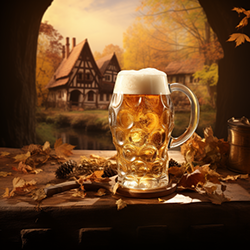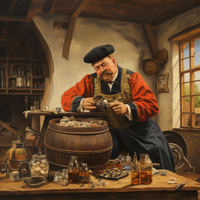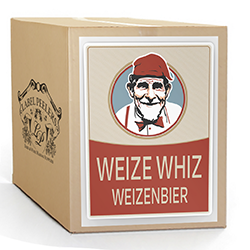The Weizenbier: A Taste of Nobility
Posted by Matteo Lahm on 5th Jul 2023
You, the home beer maker, are about to embark on a fascinating journey. A journey that will take you back to the origins of one of the world's most beloved beer styles - the Weizenbier. As you delve into the history, the recipe, and the special techniques of brewing this beer, you'll discover a rich tapestry of tradition and innovation that has shaped this beer style over centuries.
The story of Weizenbier, or wheat beer as it's commonly known, begins in the Middle Ages in Bavaria, Germany. You might be surprised to learn that the brewing of wheat beer was once a royal privilege, granted exclusively to the Bavarian royal family in the 16th century. Imagine, your favorite brew being a royal prerogative!

Now, let's get to the heart of the matter - the recipe. Your Weizenbier is a top-fermented beer, which means you'll be using ale yeast in your brewing process. The grain bill is typically composed of at least 50% wheat, with the remainder being barley. This combination gives your Weizenbier its distinctive light color and hazy appearance.
But what about the special techniques to make it? Here's where your skills as a home beer maker truly come into play. The key to a great Weizenbier lies in the fermentation process. You'll need to maintain a fermentation temperature of around 18-20°C (64-68°F) to encourage the production of the banana and clove flavors that are the hallmark of a good Weizenbier. You would also want to use a specific type of yeast. A great option is the White Labs WLP300 Hefeweizen Ale Yeast. This yeast strain is engineered for the correct flavor profile with a slightly tart finish.
Remember, the fermentation temperature can greatly influence the balance of these characteristics. A lower fermentation temperature (around 18°C or 64°F) will produce more clove, while a higher temperature (around 22°C or 72°F) will bring out more banana.
When it comes to the hops, they are not the star of the show for this beer style. It is known for its low bitterness and the focus is more on the flavors contributed by the yeast and the wheat malt. That being said, hops are still an essential part of the recipe, providing a balance to the sweetness of the malt.
Traditional German hops are typically used in brewing Weizenbier. The most common choices are Hallertau and Tettnang. These hops are known for their mild bitterness and subtle floral or spicy aromas, which complement the banana and clove flavors of the beer without overpowering them.
Remember, the goal is to add just enough hops to balance the sweetness of the malt, not to create a hop-forward beer. The typical International Bitterness Units (IBUs) for a Weizenbier range from 10 to 15, which is quite low compared to other beer styles.
As you are making your Weizenbier, keep in mind, patience is your friend here. Allow it to ferment for about two weeks, and then let it condition in the bottle for another two weeks. This will give your beer the time it needs to develop its full flavor profile.
As you pour your homemade Weizenbier into a tall, slender glass and watch the creamy white head form, take a moment to appreciate the centuries of tradition and innovation that have gone into creating this beer style. You're not just brewing a beer; you're participating in a rich cultural history that spans continents and centuries.
So, raise your glass, take a sip, and savor the taste of your Weizenbier. You've earned it. After all, you're not just a home beer maker; you're a part of the grand tradition of beer brewing. Cheers to you and your royal grog!


